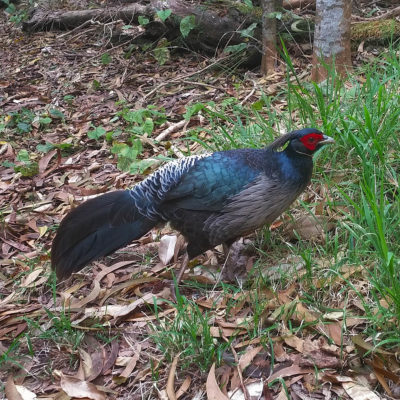Hawaiʻi Wildlife Conservation Stamp Contest Opens For Entries
DLNR’s Division of Forestry and Wildlife opened its annual wildlife conservation stamp contest depicting game mammals and birds for the 2021-22 hunting stamp. The stamp is a requirement on Hawai’i state hunting licenses. The game bird stamp is required for anyone intending to hunt game birds.
The subjects for this year’s stamps are the Kalij Pheasant and Mouflon-feral hybrid sheep. Both stamps will be available to stamp collectors. Sales from the stamps will fund the state’s Wildlife Revolving Fund to support wildlife populations, habitat and manage hunting in the state.
Details about the contest are as follows:
SUBJECT:
- Kalij Pheasant (Lophura leucomelanos) (Occurs on islands of Hawaiʻi and Oʻahu)
- Mouflon-Feral Hybrid Sheep (Ovis musimon x Ovis aries) (occurs on Lānaʻi, Hawaiʻi, and the game ranches of Maui)
SETTING: Hawai‘i habitat
SIZE: Completed painting with a maximum of 24” by 36” and unframed (to be reduced to 1” X 1.5” stamp)
MEDIUM: Oil or acrylic
ENTRY: Completed oil or acrylic painting or an 8.5” X 11” photo/print/photocopy of a completed painting
DEADLINE: All entries must be received by February 5, 2021. Notification of the winner will be made on February 20, 2021.
SHIPPING FEE: All paintings sent must be accompanied by a $35.00 fee, to cover the cost of returning the artwork. If a check is not included, you will need to come to the DOFAW office to pick up your artwork. Checks are to be made payable to the DLNR. Otherwise, a photo, print, or photocopy of an original painting may be sent with no fee (see application form).
PAYMENTS: The winner will receive a maximum award of $1,000.
Mouflon-feral hybrid sheep: Mouflon sheep were introduced to Hawai‘i Island in 1957. Shortly afterwards, biologists from the State Division of Fish and Game began crossbreeding purebred mouflon rams with feral ewes at Pu‘u La‘au on Mauna Kea. The hybrid and purebred mouflon sheep were all released throughout Mauna Kea from 1962-1967. Currently, most, if not all of the sheep currently on Mauna Kea, are hybrid-mouflon sheep. These animals live in the high elevation slopes of the Mauna Kea and Mauna Loa volcanoes, in what is considered some of the most beautiful upland forests of Hawai‘i.
Kalij Pheasant: The Hawai‘i Division of Fish and Game introduced this popular game bird to Hawaiʻi in 1962 from Southern Asia where it was found in forests and thickets, especially in the Himalayan foothills, from Pakistan to western Thailand. At about 33 inches long, the males are black with a gray belly, while the females are mottled brown. They have a distinct red skin patch around their eyes and a crest of feathers atop their heads.
They are relatively common in upland areas, so they can be readily found on Hawai‘iʻs Big Island, most noticeably within the Hawaiʻi Volcanoes National Park, on the southeastern slopes of Mauna Kea, and in the hills north of Kailua-Kona. On Oʻahu, a small population appears to be established in the western hills, including the Nanakuli Forest Reserve.
Background
Funds from sales of the Hawai‘i Wildlife Conservation Stamps go into the state Wildlife Revolving Fund to support wildlife populations and habitat and to manage hunting in the state. Activities and projects supported by this fund have included surveys of game bird and mammal populations; land leasing for hunting; predator control; and maintenance of wildlife watering units. In addition, planting of native shrubs and trees, controlled burns, removal of invasive plants, and other wildlife habitat improvement and restoration projects are supported by these funds.
Last year, revenues from the Conservation Stamp and the Game Bird Stamp were used to cover some of the costs of maintaining hunting units and to add game bird and game mammal hunting opportunities where possible. Funding helped pay for facility development, game mammal and game bird surveys, management of hunts, signage, supplemental game bird releases in new areas, food crop plantings for game birds, mowing grasses and weeds to improve habitat and hunting access, control of predators, and annual lease rental of the Lānaʻi Cooperative Game Management Area and several other hunting unit leases.










